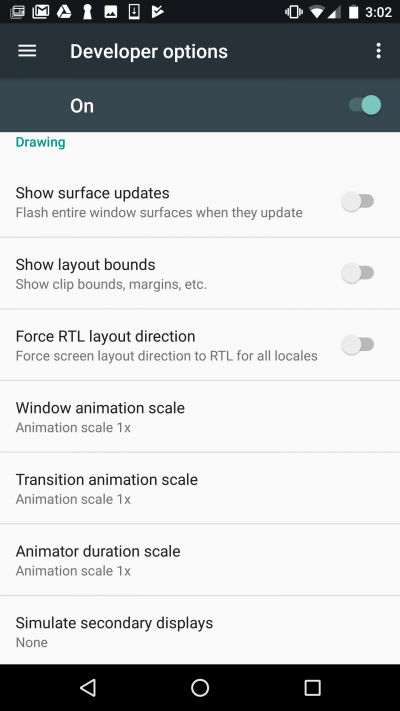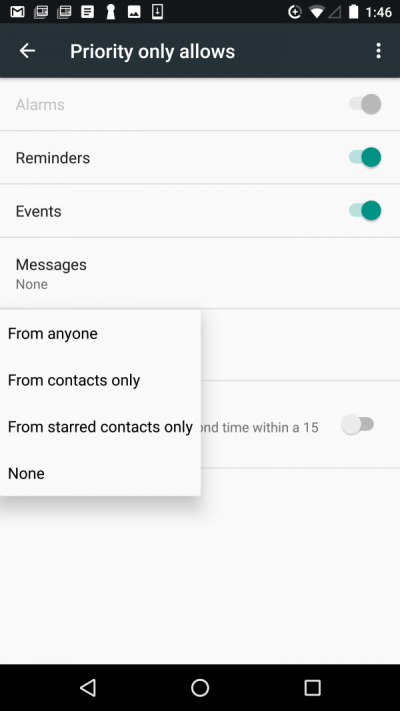10 incredible things you didn’t know your Android could do

So you feel like you are an expert and you know all you need to know about your Android phone. You can adeptly make calls, send text messages, check emails, change settings, download apps and everything in between.
Sure, having the right know-how to get things done on your smartphone can make you feel like a bonafide master. But of course, there are still hidden Android tricks here and there that might surprise you.
Here are 10 things that, chances are, you never knew your Android phone could do:
1. Use your voice to perform tasks

If you want to use Google’s voice assistant ala Cortana, Siri or Alexa, simply say “OK Google” or click on the microphone icon on the Google search bar.
You can then use your voice to do a variety of tasks like send emails, texts, make phone calls, reminders and, of course, do Google searches. You can even have your Android phone listen in to a song to identify it.
2. Priority Calling
On occasions when you don’t want to be disturbed, you can filter text and call notifications to only show contacts you deem important.
To set your “Do Not Disturb” priority settings, go to Settings >> Sound >> Do Not Disturb. Here you can choose your notifications for calls and messages.
Note: To set your “starred contacts,” open Contacts, search for the contact you want to favor then tap the star in the upper left.
You can also turn on “Repeat callers” in this section. If this feature is turned on, you will always get a notification if a caller tries to call you within a 15-minute period regardless of your priority settings.
If these options are not enough, you can also set up your own notification custom rules under “Automatic rules.”
3. Unlock your phone automatically in your home

Smart Lock allows your Android phone to automatically unlock when it’s in a trusted location such as your home or office.
To enable Smart Lock, go to your phone’s Settings >> Security >> Smart Lock then tap on Trusted Places to add your home or office location. Note: You will need to set up a PIN, passcode or pattern lock to turn on Smart Lock.
4. Plug in a USB mouse or keyboard
To do this trick, you’ll need a USB mouse or keyboard and something called a USB OTG (On-The-Go) cable.
USB OTG cables typically have a micro USB connector on one end and a female USB connector on the other. With it, not only can you connect a USB mouse or keyboard to your Android gadget, you can also connect other USB peripherals like USB flash drives, card readers, digital audio converters and game controllers.
USB OTG cables are not that expensive. Check this one out at Amazon.
5. Invert colors for better readability

To make your Android phones look a bit easier on the eyes, try inverting its colors. Do this by going to Settings >> Accessibility then toggle “Color Inversion” or “Negative Colors” to on.
This will make your Android phone’s graphics look odd but it does help reduce eye strain.
6. Turn on the Developers Options menu

Did you know that your Android phone has a hidden menu that you can access to enable advanced options?
It’s called the Developers menu and you can turn it on by going to Settings then scroll down to About Phone or About Tablet.
Under this section, locate the Build Number then tap it multiple times until you see a notification saying “you are now X steps away from being a developer” with X being the number of remaining taps before the Developer Options are unlocked. After the seventh tap, the Developer options should be available.
With Developer options on, your Android phone opens up to tons of advanced settings. Be careful with what you tweak in here since these options can seriously mess up your phone. If you are not sure what a particular developer option does, better leave it alone.
7. Speed it up by turning off unneeded animations

In case you haven’t noticed yet, there are subtle graphical flourishes that add to your phone user interface’s polished look. Although these can be cosmetically pleasing, they are really not essential to your phone’s functionality. In fact, these effects may even be slowing down your phone!
With the Developers Options turned on, to disable animations go to Settings >> Developer options and scroll down to Window animation scale, Transition animation scale, and Animator duration scale and turn them all off.
Keep your Android gadget’s Developer options turned on or the animation settings will revert back to their default settings.
8. Encrypt your phone data
Encrypting your phone is always a good idea. By doing this, it scrambles your data into an unreadable state and it requires your PIN, password or pattern lock to decipher it.
To turn your Android phone’s encryption on, go to Settings >> Security >> then tap Encrypt phone. If your phone is not encrypted yet, the whole process may take an hour or so, depending on the amount of data stored.
Also, keep in mind that encryption may slow down your phone. Although this is no longer an issue with newer phones, older phones with slower processors can be impacted.
9. Display a custom lock screen message

Losing your phone is always a hassle but hopefully, this next trick will increase your chances of getting it back.
To display a custom lock screen message, go to Settings >> Security >> tap the Screen lock gear >> Lock screen message. From here you can type specific messages like “If found, please call XXX-XXXX” or other contact info.
10. Lock or wipe it remotely

Losing your phone is bad enough but a stranger gaining full access to your lost phone’s data is even worse. Thankfully, Google has a “remote lock and erase” option via Android Device Manager.
To turn this on, open Settings >> Google >> Android Device Manager then toggle “Remotely locate this device” and “Allow remote lock and erase” to on.
To remotely track, lock or wipe your Android phone, log in to the Android Device Manager app on another Android gadget or the Android Device Manager website. Here, you can track your lost phone’s location and do these three options: ring it, lock it or erase it.
We may receive a commission when you buy through our links, but our reporting and recommendations are always independent and objective.
Tags: Amazon, Google, operating system, security

